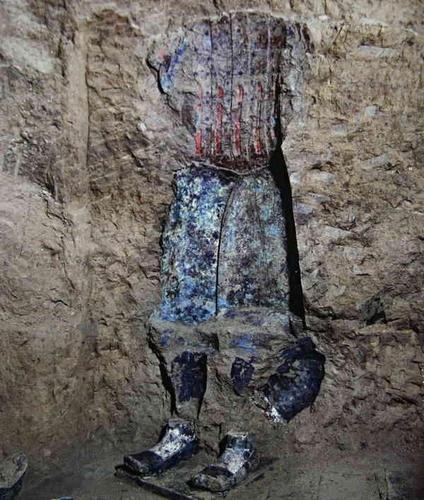
Were the Terracotta Warriors Buried?
The Terracotta Army is one of the most iconic archaeological discoveries of all time, captivating the world with its vast scale and intricate craftsmanship. However, a common misconception arises from the term "buried" often used in association with this ancient wonder. So, were the Terracotta Warriors actually buried?
The Nature of the Pits
The Terracotta Army resides in three main pits, designated Pit 1, Pit 2, and Pit 3, located near the mausoleum of Qin Shi Huang, the first emperor of China. Estimates from 2007 suggest these pits contain a staggering number of figures:
- Over 8,000 soldiers: Each meticulously crafted with unique facial features, hairstyles, and armor, reflecting the military ranks they represent.
- 130 chariots with 520 horses: These bronze and wooden chariots, some with drivers and crewmen, showcase the military technology of the Qin Dynasty.
- 150 cavalry horses: These life-sized equine figures add further grandeur to the army's composition.
The crucial point is that these pits were not buried in the traditional sense. Instead, they were subterranean structures, essentially vast underground chambers designed to house the Terracotta Army.
Construction and Purpose
The pits were constructed using sophisticated engineering techniques. Workers first dug massive trenches and then lined them with layers of brick and earth. Wooden beams and matting formed the ceiling, which was then covered with additional layers of soil, creating a protective mound above the figures.
The purpose of this elaborate construction was not to hide the army from view, but rather to:
- Protect the figures: The underground chambers shielded the terracotta and other materials from the elements, ensuring their preservation.
- Create a symbolic afterlife army: The army was meant to serve Qin Shi Huang in the afterlife, embodying his power and ambition. The layout of the pits, with their formations of soldiers, chariots, and cavalry, reflects a real-world military arrangement.
Discovery and Excavation
Over time, the wooden supports of the pit ceilings collapsed, causing some damage to the figures below. The pits were eventually forgotten, their existence only rediscovered by farmers digging a well in 1974.
Excavation efforts continue to this day, carefully uncovering and preserving the figures. However, the majority of the Terracotta Army remains in situ within the pits, undisturbed since their creation over 2,000 years ago.
Q&A
Q: Why were the Terracotta Warriors not looted over the centuries?
A: While some accounts suggest early tomb robbers may have entered the pits, the sheer scale of the complex, combined with the lack of easily transportable treasures (the figures themselves are too fragile and heavy), likely deterred widespread looting.
Q: Are all the figures identical?
A: No, the figures are remarkably individualistic. Each soldier has a unique face, hairstyle, and uniform details reflecting their rank and role within the army.
Q: Why are some of the figures brightly colored?
A: Originally, the Terracotta Army was brightly painted, showcasing vibrant pigments. While much of the paint has faded or flaked off over time, ongoing conservation efforts are revealing glimpses of their original splendor.